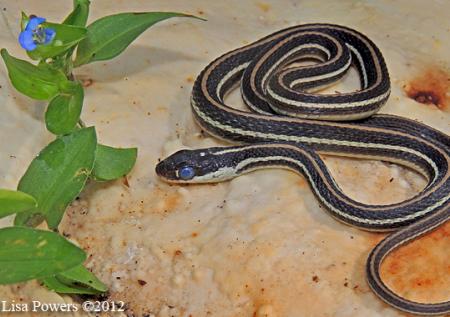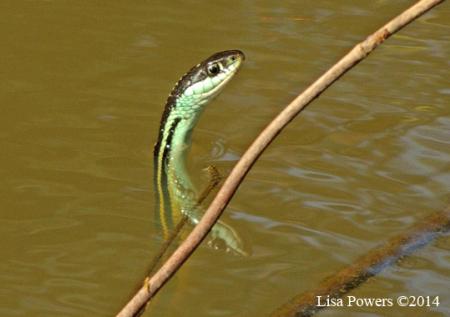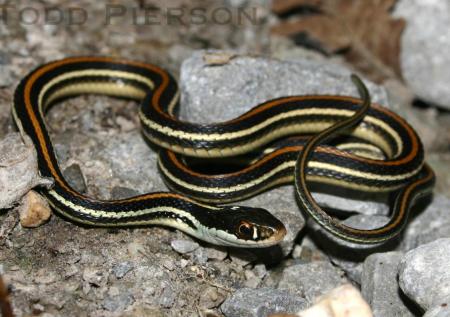Western Ribbonsnake (Thamnophis proximus)
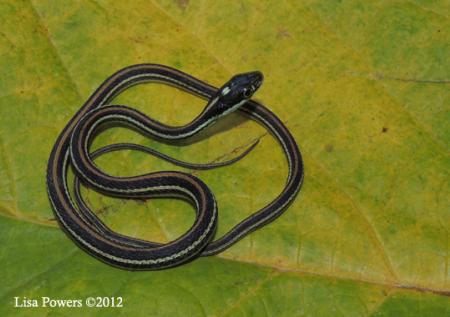
Click a thumbnail below to view the larger image:

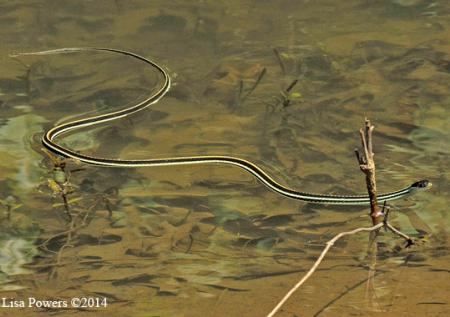
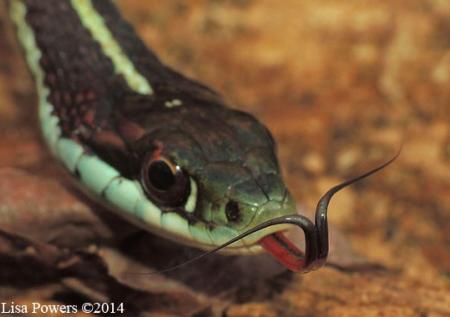

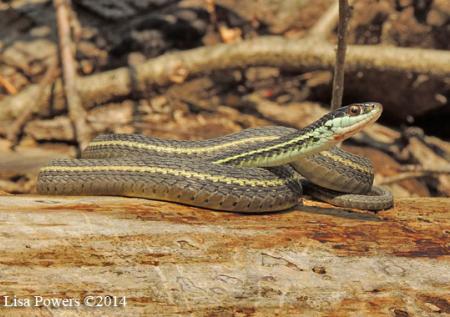

Have you seen a Western Ribbonsnake?
Click the Report Snake button below to reporting seeing a Western Ribbonsnake.
Report Snake SightingAppearance
Western Ribbonsnakes are slender and have a gray to black dorsum with three yellowish stripes, one on the back and one on each side, that run down the length of the body. Their bellies are light colored. Their lip scales are white with no black outlines (see Common Gartersnake). Western Ribbonsnakes typically have a light spot on the top of their heads; this spot is usually lacking on Eastern Ribbonsnakes. Their scales are keeled and they have a single anal plate.
Size
Western Ribbonsnakes are typically 2 feet in total length.
Habitat/Range
These snakes are found in the western half of the Jackson Purchase. Western Ribbonsnakes prefer wetlands and wetland edges and riparian zones of streams and rivers. They often climb in bushes overhanging water.
Natural History
Western Ribbonsnakes mate in the spring and females give birth to live young in the summer or early fall. These snakes prefer to eat amphibians and small fish.
Notes/Miscellaneous
Western Ribbonsnakes are considered a “Species of Greatest Conservation Need” by Kentucky Department of Fish and Wildlife Resources.
Supplemental Images
